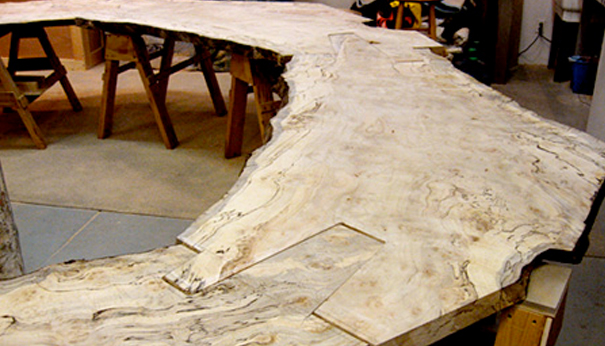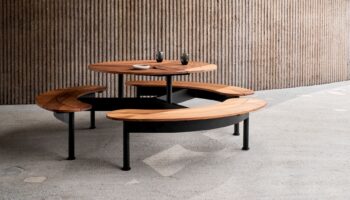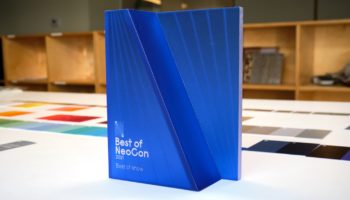At BKLYN DESIGNS 09: Aim for Enlightenment with Eric Manigian’s Enso
If you’re a Brooklyn devotee, you’re sure to recall the work of master craftsman Eric Manigian. His marquee offering at last year’s show—the Solid Walnut Purple Heart Dining Table—elicited the requisite chorus of oohs and aahs from attendees, not to mention sundry accolades from yours truly. To quote from a much-trusted source: “the structure hearkens back to Japanese Timber Frame techniques, while the integration of the wood’s striking hue (more of a technicolor magenta, actually) with the sedate tones of dark walnut counterpoises the old to the new.”
Enso Table. Designed by Eric Manigian.
In light of Manigian’s artistic evolution during the last year, that old saw about the “more things change…” seems apropos. Consider his latest feat of unsparing ambition—to be unveiled in due course at BKLYN DESIGNS—the Enso Table, “a dramatic circular piece 15-16 feet in diameter, made from a salvaged spalted maple tree, with the wood’s gestural natural edge exposed.” “Enso,” “a Japanese word meaning circle that symbolizes strength, elegance, the universe, and the void,” characterizes both oneness (the symbolic unification of emptiness and fullness), as well as enlightenment. Manigian expounds on the concept: “in the simplest, most bare graphic essence it’s an expression of the moment—by depicting a circular ring drawn with one bold brush stroke.” The artistic aim is thus ambitious indeed—Manigian’s take on Enso proposes none other than a time out of time; that is to say, the piece intends to capture and memorialize the present, thereby defeating the mental noise that seems to consign the human race to past and future.

To look at this impressive piece is to step out of time, indeed, such is its scale and scope. A big proponent of nature’s capacity for creating character, Manigian uses the salvaged lumber’s contrasting grains and spidering “spalt” to excellent effect, likening the black lines (caused by the disease that led to the tree’s demise) to ink brush painting and calligraphy. The over-sized joints connecting one enormous slab to the next evoke another of Manigian’s passions—the timber framing techniques of Japanese temple builders.
Enso is accordingly much in line with Manigian’s practice of Zen Buddhism (he’s been a student since a 1990 visit to Kyoto’s famed rock gardens) from both a conceptual and pragamatic perspective. One way Manigian uses Zen to inform his work is by re-establishing the idea of permanence. Those around him know that he lives his mantra (“nothing is green if it ends up in the landfill”) by creating exceptionally beautiful pieces that aim to transcend the ravages of time and its fickle tastes: “we’re committed to ensuring the longevity of our furniture–the belief in making something to last for generations, countering contemporary tendencies towards a disposable culture.”
The short way of saying this is that to invest in Enso (or other of Manigian’s fine work) is to invest in an heirloom, to preserve the past by appropriating an artifact that will be admired and cared for down through the generations. Manigian’s stunning Enso comes full circle indeed.




Leave a Reply